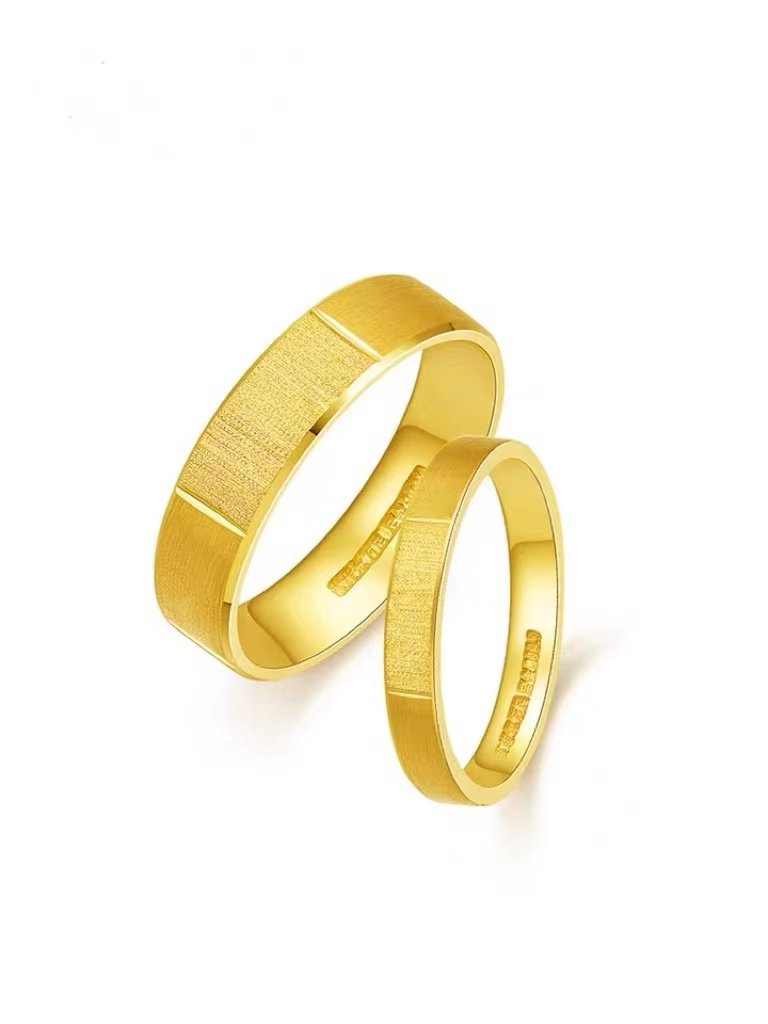
When we need to buy a ring, we always choose between gold and platinum rings, as these two precious metals can be paired with various styles of gemstones. Familiarizing ourselves with the history behind both precious metals and understanding the differences in value, appearance, and care methods between gold and platinum can lead to a better choice between gold and platinum.
About the gold
Gold mining has been going on for more than 7,000 years, and archaeologists still regularly dig for gold artifacts, including jewelry. Some of the oldest gold rings, bracelets, necklaces, and earrings were found in a Bulgarian cemetery in the early 1970s. The gold in these jewels was mined and made between 4600 and 4200 BC, hundreds of years before the founding of Egypt and the Roman Empire!
We can find gold on every continent, but most of it is concentrated in Africa and India. This precious metal is rarely pure. Instead, gold is almost always mixed with other metals and minerals and must be refined to be helpful. Gold is heated several times during refining and often combined with an alkaline cyanide solution to remove secondary metals, minerals, and impurities. Gradually, the refining process produces pure gold, a dense but soft, malleable precious metal with a bright yellow color. More than 50% of refined gold is used in jewelry. The rest became some industries’ gold bars, coins, and electrical connectors.
Gold destined for the jewelry market is often mixed with other precious metals to form gold mixtures or alloys. Jewelers make these alloys because gold is soft and easily scratched and deformed in its pure state. In contrast, the gold mixture is much stronger and resists the scratches of everyday wear and tear when used.
The purity of gold
The carat metric measures the purity or percentage of gold in a piece of jewelry. Each carat represents a part of 1/24. Pure gold is 24 karat because all 24 parts of the gold are pure gold, while 18 karat gold contains 18 pure gold and six other metals. Be careful not to confuse carat with K, a measure of gold purity, and carat and C, which are weight units for diamonds and other gemstones.
Most gold jewelry contains 24k, 18k, 14k, or 10k pure gold. Each level of gold purity has specific advantages and disadvantages, as follows:
24 k gold
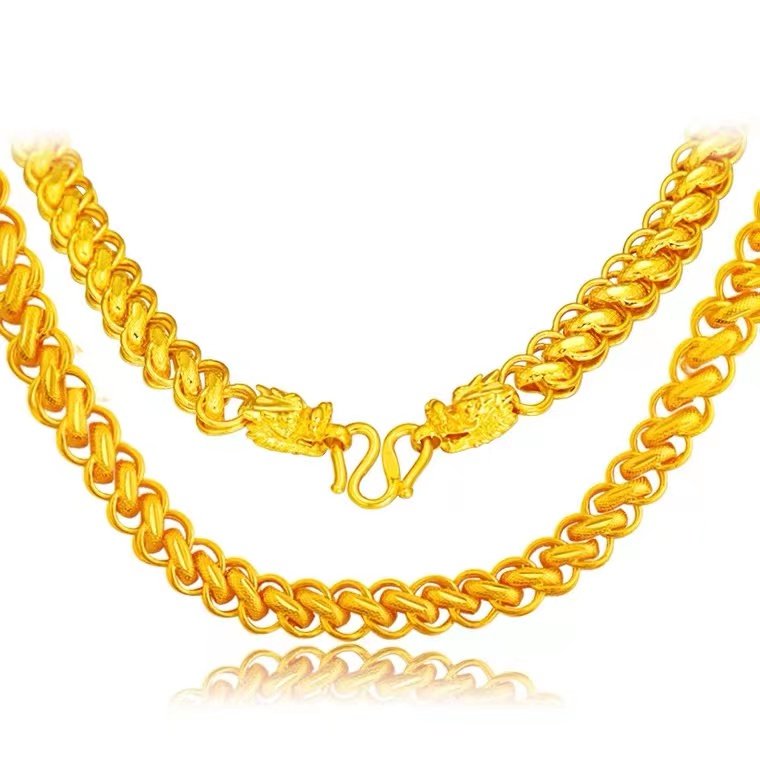
24-karat gold is 99% pure gold. It’s rarely used in jewelry.
Pros: Highest purity.
Cons: Soft and easy to damage. A bright orange-yellow color that doesn’t blend well with the other colors. The price is also the most expensive.
18 k gold
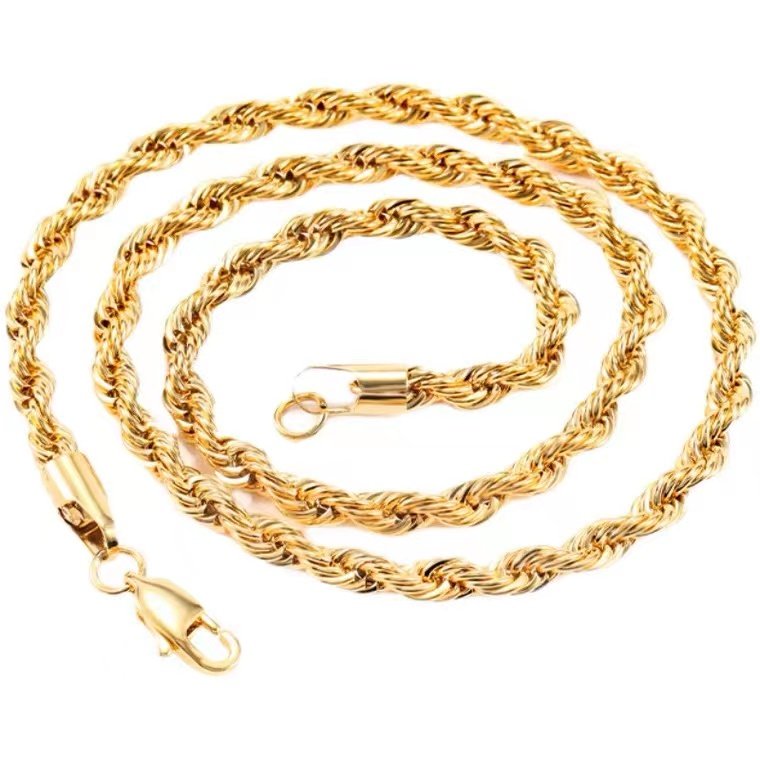
18-karat gold comprises 75% gold and 25% other metals, such as zinc, copper, and palladium.
Pros: Rich yellow color. Scratch resistant and durable.
Cons: Slight plasticity, easy to damage when too thin.
14 k gold
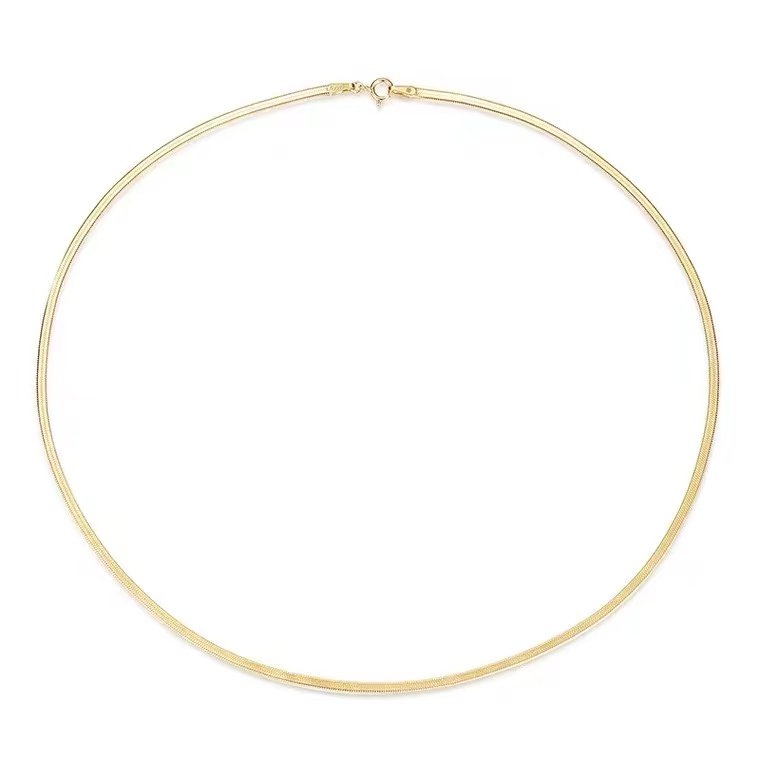
58.3 percent of 14-karat gold is made up of gold and 41.7 percent of other metals.
Pros: Lighter yellow. Strong and not easily damaged.
Cons: Lack of richness and saturation. Most metals other than gold can cause skin irritation.
10 k gold
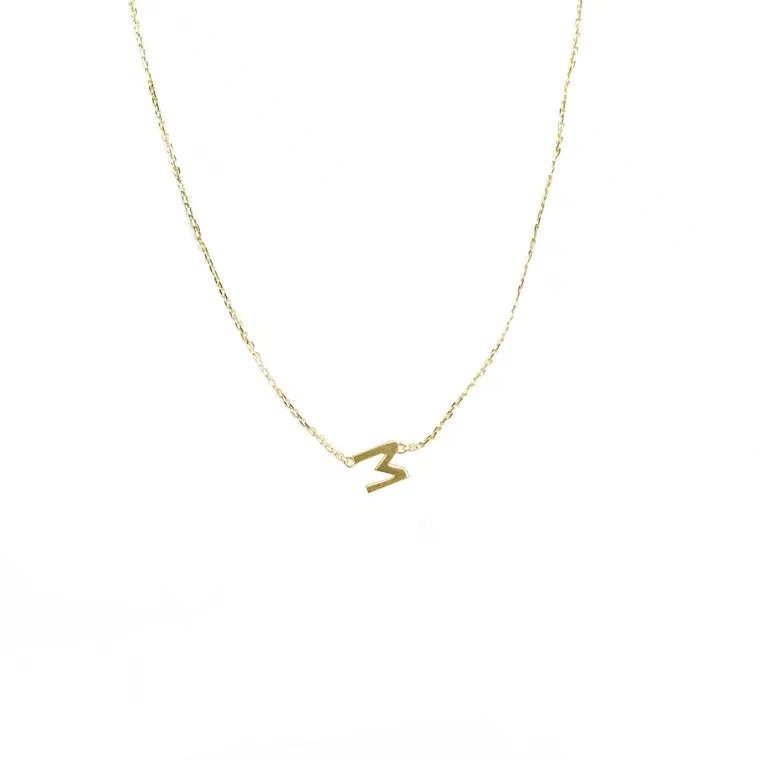
10k gold comprises only 41.7 percent gold and 58.3 percent other metals.
Pros: strong, not easy to damage. The price is low.
Cons: Light yellow, other metals can cause skin allergy, low price.
Other forms of gold
18-karat gold jewelry is currently the most popular. Jewelry containing 75% gold and 25% complementary metals captures gold’s rich natural color and luster while being reasonably priced and sturdy enough to stand up to years of everyday use. For decades, 18-karat gold was only available in yellow, but today you can also find rose gold and white gold forms.
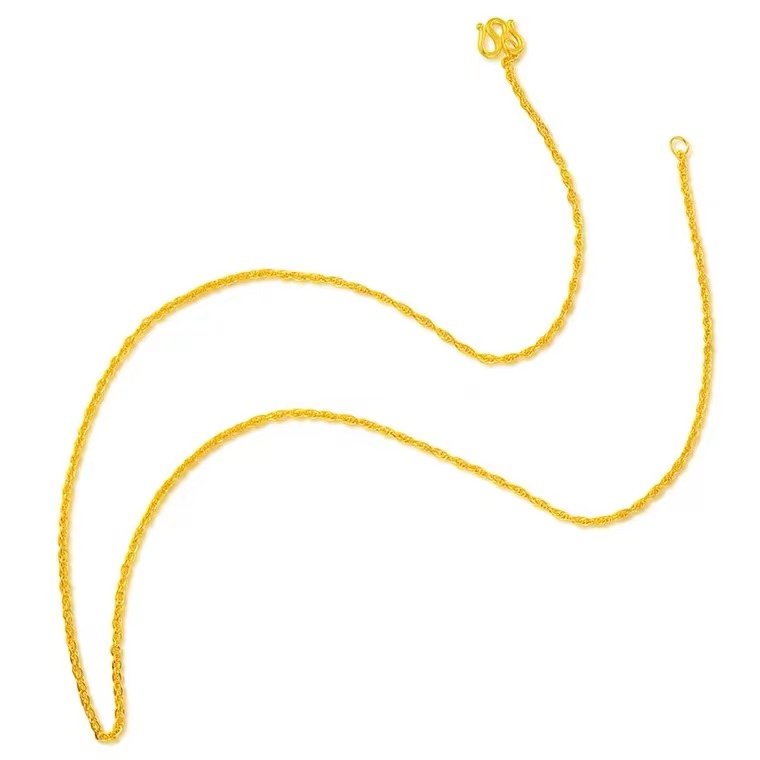
Rose gold: The modern romantic option

How is rose gold made?
Copper is used to turning natural gold into a beautiful rosy color. Dark rose gold is made by mixing 75% gold and 25% copper, while lighter rose gold is made by reducing the copper content and adding a small amount of white metal, such as silver.
What are the advantages of rose gold?
Due to its unprecedented proportion, rose gold has more advantages than gold in ductility and hardness, which makes up for the disadvantage of gold’s lower hardness. It is more diversified in shape design and has various styles, giving designers the most significant space for decoration and modification.
Are there any downsides to rose gold?
Similar to gold, some people can be allergic to one of the ingredients in rose gold, but this is rare.
What kind of care does Rose Gold need?
Rose gold doesn’t require special care, just occasional cleaning, and polishing. Rose gold is excellent for women, and when combined with paved diamonds, rose gold creates an incredibly romantic engagement ring.
White gold: Simple and popular choice
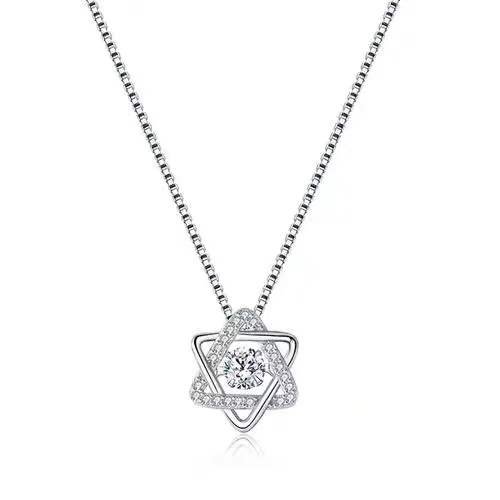
How is white gold made?
Gold is mixed with white metals such as palladium and silver, turning almost white. Because white gold is never wholly white, rings and all other jewelry made from white gold are plated with a layer of rhodium gold. This coating gives them a smooth white color and extra strength and durability.
What are the advantages of White gold?
White gold is the most common metal. It has the advantages of high hardness and good ductility, suitable for everyone to wear; white skin will be more white, and yellow skin will appear with infinite charm.
Are there any disadvantages to White gold?
White gold rings usually take on a light yellow color over time. The rhodium coating slowly wears away, revealing the yellowish gold underneath. This color can be easily removed by applying a fresh rhodium coat. A frequently worn ring may need to be rhodium-plated every few years.
What kind of care does White gold need?
White gold needs occasional cleaning and polishing and a new rhodium coating whenever it starts to look yellow. White gold is famous for its simple yet modern aesthetic. It can combine with other colors of gold and a wide variety of gemstones to make elegant engagement and wedding rings.
About the platinum
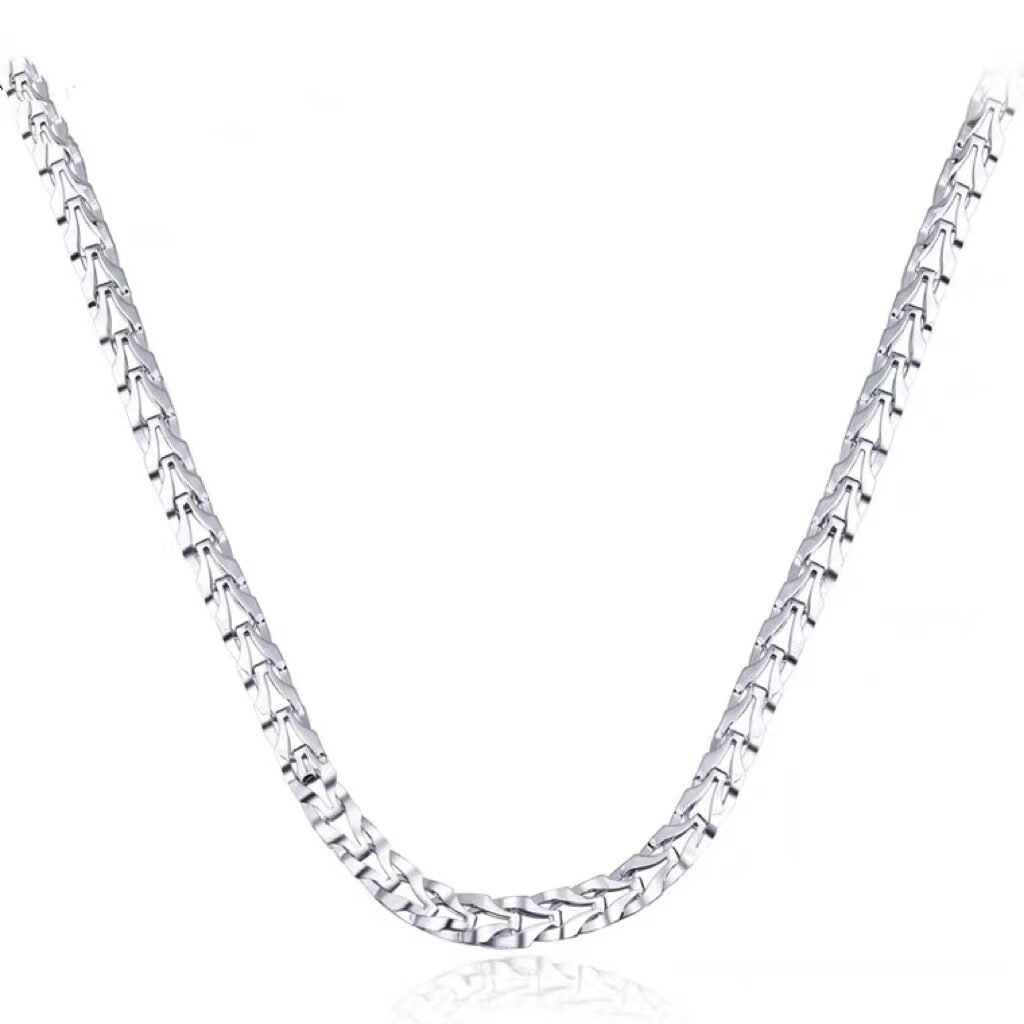
Platinum is a high-density but plastic precious metal. History shows that it was first mined in Ecuador 2,500 years ago. Aboriginal people used it at that time to decorate statues and make jewelry. Platinum made its way from South America to Europe in the 18th century. Scientists spent years experimenting with it before it was used in household goods and ornaments, and platinum became popular in jewelry at the end of the 19th century. It makes rings, bracelets, necklaces, and even crowns. The crown was made for Queen Mother Elizabeth when she crowned her husband. The entire height frame is platinum and covered with nearly 3,000 diamonds.
Almost forgotten during World War I and World War II, platinum jewelry has steadily recovered in the jewelry market over the past few decades. Brides and grooms exchange platinum rings, the symbol of true love’s strength and endurance.
Is pure platinum used in jewelry?
No, pure platinum is too soft for jewelry. However, platinum must only be mixed with tiny amounts of other metals to make strong enough jewelry. The purity of platinum is measured as 1,000 parts. Typically, jewelry is made with 950 parts platinum and 50 different metals. That means platinum rings have a higher percentage of precious metals than 18-karat gold rings, which are 75 percent gold and 25 percent other metals. The most common metals mixed with platinum are palladium, rhodium, iridium, and other platinum group metals, as well as common metals such as copper and cobalt.
What are the advantages of platinum?
Platinum has solid antioxidant power, stable physical and chemical properties, high melting point, so it is also used to make space suits; Platinum can also be used as a catalyst, which is widely used in automobile tail-cleaning devices and plays a vital role in protecting the environment.
What are the disadvantages of platinum?
While platinum is strong, it can easily scratch and, in rare cases, even deform if the ring is made too thin. Platinum is also generally more expensive than gold.
Why is platinum more expensive than gold?
Platinum is more expensive than gold because it is the world’s rarest precious metal and can only be mined in a few places around the globe (mainly in South Africa and Russia). If all the platinum in the world were poured into an Olympic-sized swimming pool, it would not be deep enough to cover the instep. Moreover, platinum is more difficult to extract than gold, with high energy costs: 10 tonnes of ore take eight weeks to remove just one ounce of platinum; By comparison, an ounce of gold takes just five tons of ore in five days. At the same time, the processing of platinum requires a higher level of technology than processing gold; every step of the process technology needs to be very precise.
What kind of care does platinum need?
Platinum only needs occasional cleaning and polishing unless there are scratches. Thankfully, scratched platinum is relatively easy to fix. Jewelers can polish minor scratches and fill in deeper ones with new platinum. As platinum ages, it usually develops a soft bronzer. This patina is a dark gray film caused by normal oxidation. The film changes how the platinum interacts with light, making the rings slightly dimmer than they were new. The bronzer on platinum is not unsightly but can be removed by regular polishing. Platinum is a fashionable choice for wedding and engagement rings. It works well with aligned diamonds, junior diamonds, and accompanying gems. If you like the quality and beauty of platinum, but don’t like the idea of needing to replace the rhodium, consider buying a platinum ring. Platinum rings are durable, the same color as white gold, and never change color.
White gold vs Platinum: Which should you choose?
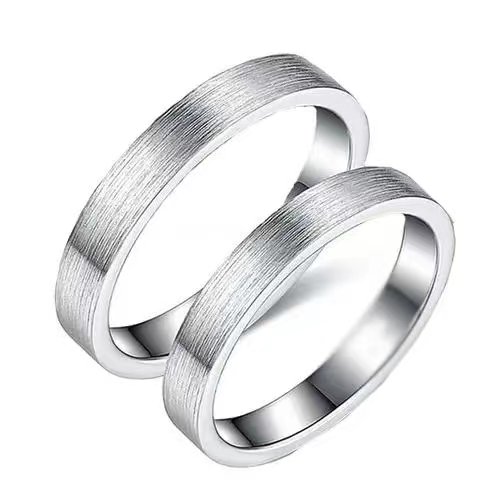
White gold and platinum are currently trendy for engagement and wedding rings. Both metals have fascinating modern beauty.
They work well with all skin tones, styles, and the vast majority of gemstones. Above all, they represent the preciousness and endurance of true love. Suppose you’re having a hard time deciding between White gold and platinum. In that case, one way to get the most out of both precious metals is to consider a ring with an 18-karat white gold band and a platinum-pronged tip. This combination of White gold and platinum provides excellent value. The sturdy platinum prong is ideal for storing gems, while the White gold band is lovely and durable.
Platinum and gold are beautiful engagement and wedding rings that express everlasting love. If you have any further questions about platinum and gold, please contact us; we would be happy to listen to your suggestions.